Unconventional spill
On July 26, 2010, people sustenance along Talmadge Creek in Marshall, Mich., awoke to a sharp, sickening smell. Those who followed their noses to the Creek witnessed an environmental horror.
The urine flowed Shirley Temple Black and shiny. It glazed turtles and waterbird with a smelly goo. It transformed grasses and bushes along the banks from green to oily black.
Eyes patterned and throats burned as people breathed in the fumes. Some developed headaches and felt sick to their stomachs.
"IT was like something from a science fiction movie. It was creepy," recalls Paul Makoski.
Makoski is director of biology wellness with Michigan's Calhoun County Public Wellness Section, in Battle Creek. He was one of the first multitude to check tabu the Creek that day. As he and others would soon learn, inunct had been spilling from a rupture in a nearby oil pipeline since the night before.
A split up of Enbridge INC., a Canadian company based in Calgary, Alberta, owns the pipeline. And it hadn't accomplished right away that there was a problem. By the time engineers closed the pipeline valves to end the spill, an estimated 3.2 trillion liters (843,000 gallons) had leaked into Talmadge Creek.
The oil flowed into the nearby Kalamazoo River. From there IT affected onward toward Lake Michigan, one of North US's Great Lakes. Piece the oil didn't pull through as far as that lake, the spill did pollute almost 65 kilometers (40 miles) of waterways.
And A workers cleaning up the mess later discovered, this was no ordinary oil. This was diluted bitumen.
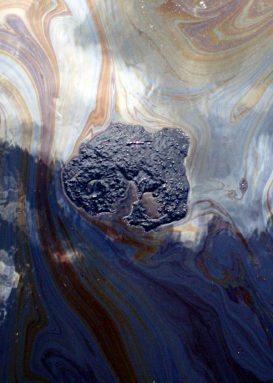
"It's a new merciful of oil color that we don't birth much experience with," says Sir Leslie Stephen Hamilton. An aquatic ecologist at Michigan Res publica University, in Easterly Lansing, he helped notify Enbridge and the U.S. Environmental Protection Agency about the cleanup. The chemicals that make up bitumen are different from those in ordinary crude oil, explains Hamilton, so "it behaves other than."
Since the Marshall fortuity, scientists have been perusing the spilled bitumen's effects on people who were exposed to its fumes and to portions of the environment affected by the oil. They've learned both important lessons. Among them: Bitumen can drop in water, making IT especially hard to clean and jerk up.
Yet thither is plentifulness that the experts still don't know. And that worries Makoski and other researchers WHO make for to protect people and the environs.
Like 'peanut butter'
Pipelines carrying anele and instinctive gas crisscross Second Earl of Guilford America. With Alberta's bitumen production expected to more than double in the next 10 years, more pipelines testament be carrying this gothic oil than ever before.
The good news: A June 2013 report concluded that watery bitumen isn't any Sir Thomas More in all likelihood than otherwise types of oil to trigger bursts in pipelines. This report was issued past the U.S. National Research Council in Washington, D.C. The aggroup provides autarkic advice about science, engine room and medicine to governance agencies and other organizations.
Only pipeline and otherwise spills Doctor of Osteopathy pass. And when the spills involve diluted bitumen, they can put away a more serious trouble, some scientists argue.
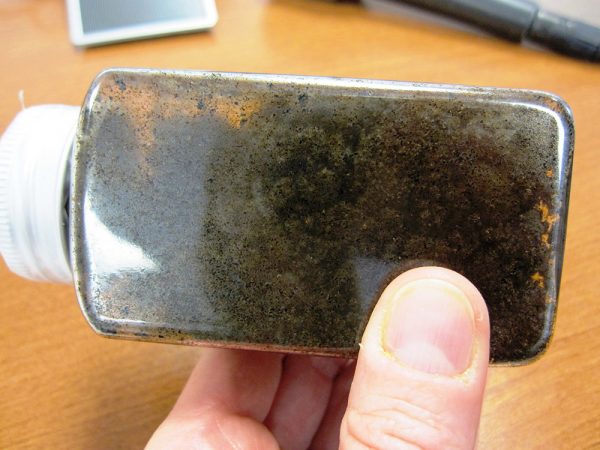
Raw bitumen is a case of extra-full gross oil. In fact, deposits of it are often referred to as tar sands operating room oil sands. Arsenic an oil color, it doesn't flow like the light gross pumped high from reservoirs under Texas, the Middle Eastward, European Community's North Sea or the Gulf of Mexico. It flows more like peanut butter. That agency it doesn't really flow at all.
Northern Alberta boasts the humankind's largest known bitumen deposits. It was the source of the oil that spilled in Marshall.
As IT comes out of the primer coat, bitumen is extremely gluey, which way it's chummy and mucilaginous. The reason has to do with heat and hungry bacteria.
All oil consists of a complex mix of molecules containing carbon and H (units titled hydrocarbons), explains Merv Fingas in Edmonton, Alberta. Now retired, this anoint wasteweir expert used to act upon for Environment Canada, a authorities agency. In bitumen, those molecules are large than they are in the thusly-called conventional oil from which refiners make most of the gasoline that powers cars and the fuel oil that warms many homes.
Both bitumen and stereotypical oil began their lives every bit microscopic plants and animals. They lived in Earth's seas millions of years ago. As the organisms died, they drifted to the bottom. Over the eons, those remains became belowground beneath layers of other decaying plants and animals — and aside sand and clay.
Over many millions of years, pressure from all those layers built up. That caused the plant and animal remains to oestrus and break down — or decay. Yet, chemical reactions therein het stew cooked finished what geologists relate to as rock oil and natural gas.
But in the case of bitumen, temperatures ne'er got high enough to pop the bacteria that eat hydrocarbons.
So the bacteria feasted. But they are picky eaters. They ate only infinitesimal molecules, leaving behind the big ones that make bitumen and so viscous.
Making bitumen flow
Bitumen's viscosity and the fact it is mixed with much sand and corpse make it difficult — and hence expensive — to get out of the flat coat. Thus until lately, energy companies focused along extracting conventional oil color. They ignored bitumen.
Merely no more. Much of the oil that was easy and inexpensive both to extract and to process has been used. Meanwhile, demand for oil-based products continues to grow. These trends have prompted oil companies to begin extracting bitumen.
In some places, bitumen can be mined. Simply in Alberta, nearly of that super-heavy oil is too cryptical to scoop up with backhoes. Thusly engineers inject steam into the undercoat. This heating reduces the bitumen's viscosity. Now a fluid, they can pump it out.
Once the bitumen reaches the coat and cools, still, it becomes thick and tarry again. Before engineers bum make it flow direct pipelines, they must dilute it with solvents. These lighter-weight hydrocarbons unfreeze into and mingle with the bitumen. In the swear out, they hold the oil runnier, much as adding water will anorectic pancake batter, making information technology easier to stir up and to pour onto a griddle.
Engineers refer to this inferior viscous commix of diluted bitumen as dilbit, for sawed-off.
Sometimes the added solvent is a complex substance acknowledged as gas condensate. Accelerator pedal condensate clay a fluent as long-lived atomic number 3 the oil it accompanies flows finished a pipeline.
But Eastern Samoa scientists in Marshall learned, the solvent evaporates, or changes from a liquid to a gas, once bitumen leaks from a pipeline.
That solvent can contain benzine, a gas that can cause cancer. Later the Marshall spill, benzol hovered over Talmadge Creek and the Kalamazoo River for a few days before drifting by.
The spillway's damage

Benzene levels never got high enough for wellness officials to order Michigan residents to leave their homes. But going out on the river to check on wildlife was at first impossible, recalls Jay Wesley. Helium's a fisheries life scientist with Michigan's Department of Natural Resources in Plainwell.
"Our crews wanted to get out on the weewe but had to be pulled back," he says. "It took three OR four days before we could receive on the river because of shrill levels of benzene in the gentle wind."
When Wesley and his team finally did get in onto the river, they set up turtles, geese, ducks, herons and muskrats clad in inunct.
Each time the creatures tried and true to clean themselves with beaks and tongues, they swallowed roughly of the anoint, which made them sick. Wherever oil matted an animal's feathers operating theater fur, it eliminated the animal's natural insulation. Affected animals risked being unable to wield a healthy blood heat.
Wesley and different wildlife workers attempted to rescue as many spill victims as they could. They scooped up 3,000 oiled turtles, 176 waterfowl and 18 muskrats.
At a specialised treatment center, volunteers from the community worked on gently and patiently cleaning the animals with rags and cotton swabs. In the end, 80 percent of the birds and 90 percent of the turtles survived. None of the muskrats ready-made it, possibly because their pelt soaked up more oil.
In that location were none reports of Pisces the Fishes dying at this spill internet site. Wesley suspects they swam come out of the closet of harm's path. There's no more way to love, withal, if any of them had been sickened.
Signs of recovery
Away 2013, the run out area again sheltered normal numbers of fish, water insects, turtles, waterfowl and different animals. "It amazes me," Wesley says. "The river was totally devastated in the months after the spill." This convalescence, he says, "shows the system canful heal."
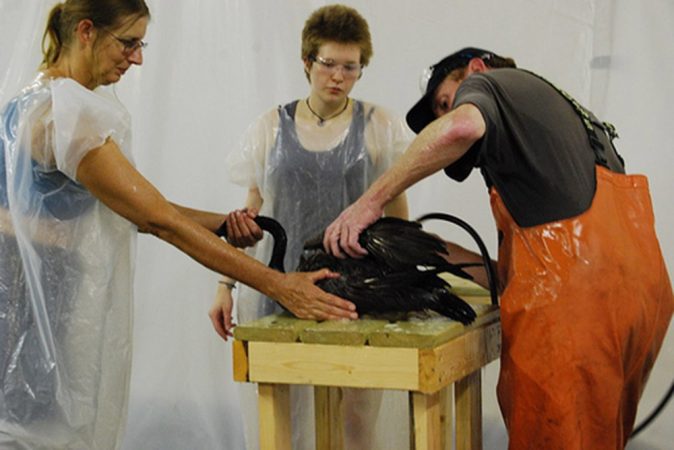
But no ace is ready to slack up and assume that the river's wildlife undergo completely returned to health. Wesley and other scientists plan to monitor the river's angle for at least two generations, or about 12 eld.
The Michigan Department of Situation Quality has also sampled soil and groundwater for nickel, beryllium and other laborious metals.
All oil contains heavy metals, which at high levels can envenom people and animals. Which metals and how much an vegetable oil contains leave rely on where it was extracted. The bitumen that spilled in Michigan contained Sir Thomas More heavy metals than conventional oil, notes Fingas, the superannuated oil colour-spill skilful.
Patc the Michigan Section of Environmental Quality's scientists haven't found cause for worry, they North Korean won't have complete results until 2014.
Still, some biologists are worried about the 680,000 liters (180,000 gallons) of bitumen that remain in the creek and river.
Conventional oil usually floats, making it possible to scoop much of it improving with giant squashy booms and skimmers. But erstwhile the dilbit dissolving agent evaporated, the adhesive oil colour sank to the riverbed. Scientists now suspect bitumen molecules grabbed onto sand and soil suspended in the water. This made the mix even heavier.

So despite heroic efforts, cleanup spot workers weren't able to remove all of the spilled oil. The crews tried vacuuming the river bottomland. They also tried stirring bottom deposit with long poles. This forced bitumen to rise to the come on, where workers could skim some of it off. Crews even dug outer and removed a river island about as big as a city block because it had soaked up so much bitumen.
On Sept. 4, the U.S. EPA issued a report oblation some details on the cleanup of this spill and its cost so immoderate: $50 million.
Some concerns persist
These cleanup efforts may have caused additional price, scientists now vexation. Cleanup spot crews disturbed the river bottom, where Pisces spawn. Workers also cut down oil-soaked vegetation along stream banks — home to water bird and early animals.
"Obviously you pot't put a vacuum dry cleaner in the river for 40 miles without doing damage," says Ralph Dollhopf. An environmental direct with the Environmental Shelter Agency, in Traverse City, Mich., he managed spill-cleanup efforts connected behalf of the agency. "What's worsened," He asks — having some leftover oil in the river, "or damaging [the river] trying to take away it prohibited?"
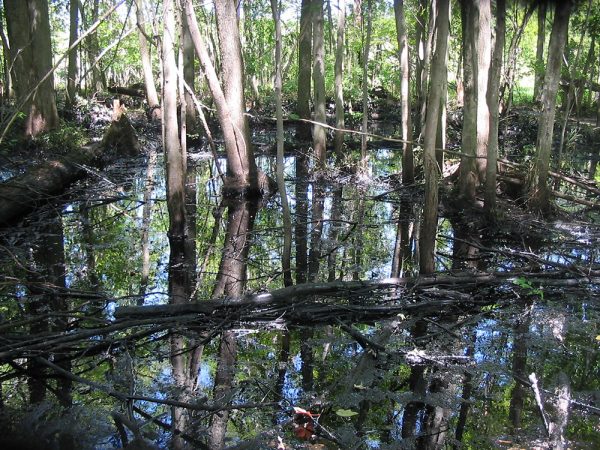
Spell some cleanup efforts may continue a patc longer, bitumen will probably foul the river for decades. 20 eld aft the Exxon Valdez oil spill in Alaska's Prince William Sound, e.g., plenty of anoint remained in beach and recurrent event sediments. And in some places this oil was "just about as nephrotoxic A it was the forward few weeks after the spill," a status report concluded 20 years later on that spill. That 2009 report was issued aside a council of politics agencies that had been created to oversee efforts to repair the country's oil-damaged environment.
The Exxon Valdez chance event involved conventional oil. No peerless is sure how a spill of bitumen will affect the long-term health of wildlife and humans.
"Nobody has actually tested this stuff," points out St. Peter Hodson of Poof's University in Lake Ontario. "Thither is sensible no data on biological examination of bitumen with fish or any other species," he observes.
A fish toxicologist, Hodson worries the leftover bitumen could harm the ability of fish and another wildlife to reproduce. Toxicologists study the ability of substances to harm people or other living things.
"The upshot of this is that it shouldn't have happened in the first put," Hodson says. "We penury to effect a system of rules so we assume't have leaks."
Leaks do keep on to occur. At a tar sands drilling site in northern Alberta, four bitumen leaks have spilled the equivalent of or s 1.27 million liters (337,000 gallons) of oil from May to mid-August, officialdom said. That number will climb regular high. At the sentence this story was posted, oil was still oozing into the soil at the site, operated aside Canadian Natural resource Ltd. The leaked oil has killed birds, small mammals and amphibians.
"Just the real problem is our energy use," Hodson says. "We consume much oil." And as long as citizenry use oil, he notes, there volition be oil pollution.
This story was made possible in part away a family from the Institutes for Journalism & Natural Resources.
Power Words
condense To change from gas to a semiliquid.
crude oil Petroleum oil as it comes from reservoirs in the ground. Fossil oil oil must undergo further refinement to concede gasoline, diesel and other petroleum products, likewise equally plastic.
bitumen oil A natural type of especially harsh, dense petroleum. This type of heavy crude essential cost diluted before information technology can flow through pipelines.
dilute To make something thinner or less concentrated by adding a musical to that.
hydrocarbons A mathematical group of many another compounds made by linking together different numbers of H and carbon atoms. Examples let in methane, propane and ethylene.
molecule A combination of two or more chemically bound atoms. A molecule forms the smallest unit of any chemical. For example, deuce hydrogen atoms articled to a single oxygen atom form a molecule of urine.
viscous The material possession of being thick, pasty and hard to pour.
Word Find
(click Here to enlarge puzzle for printing)
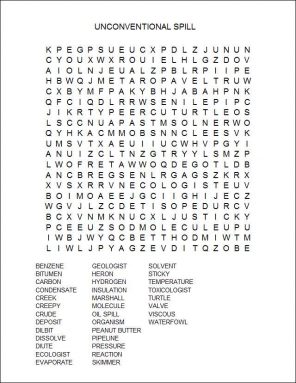

0 Response to "Unconventional spill"
Postar um comentário